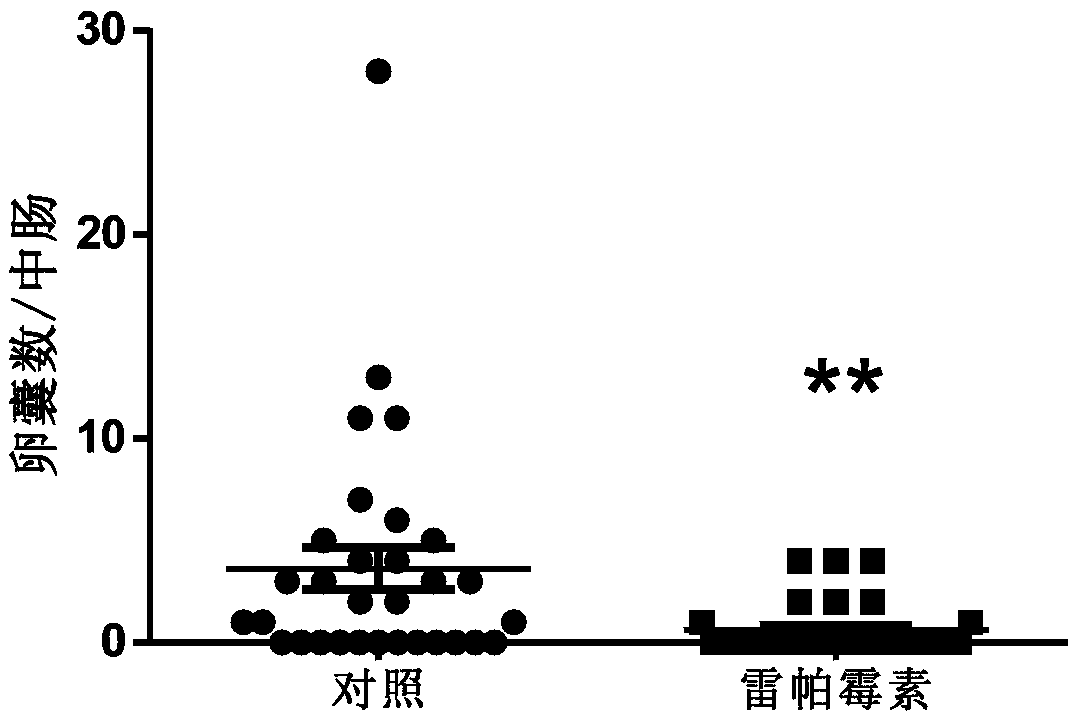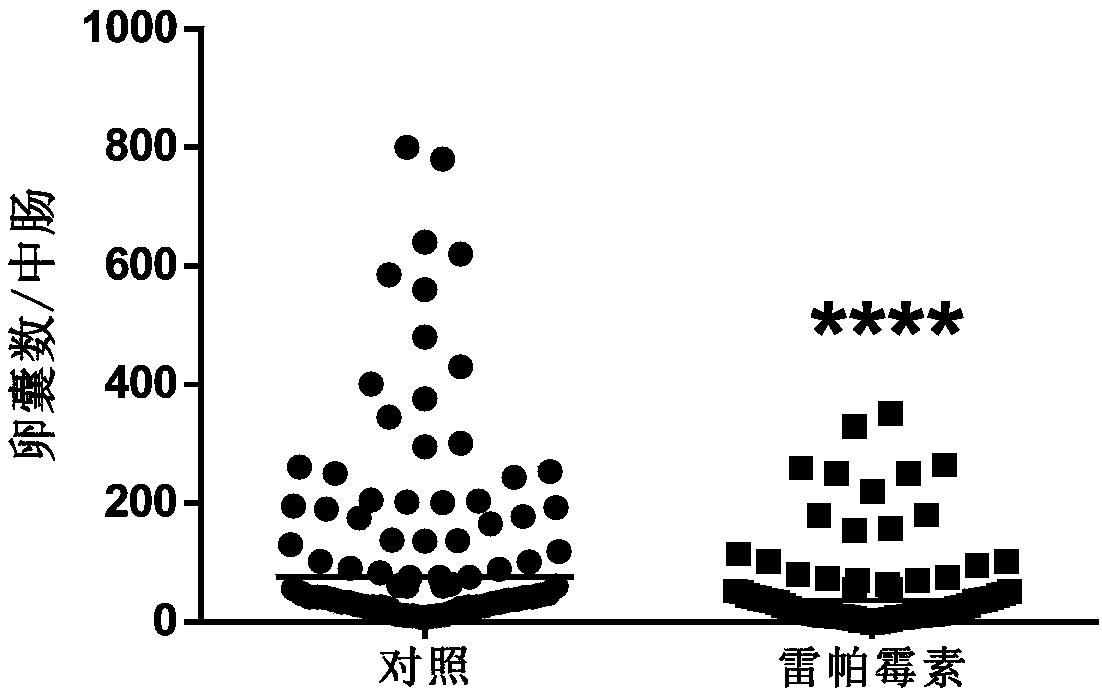Application of rapamycin in inhibiting plasmodium propagation
A technology of rapamycin, Plasmodium, applied in a new field of application to inhibit the transmission of Plasmodium by malaria vectors
- Summary
- Abstract
- Description
- Claims
- Application Information
AI Technical Summary
Problems solved by technology
Method used
Image
Examples
Embodiment 1
[0027] Preparation of Rapamycin Reagent 1: Rapamycin was prepared as a 20 mM stock solution with DMSO, and the working solution was diluted 1:1000 with PBS to make the final concentration 20 μM.
[0028] Blank reagent 1: DMSO diluted 1:1000 in PBS.
[0029] The experimental group injected 69nL of 20 μM rapamycin reagent 1 into the body cavity of Anopheles mosquitoes by microinjection; 12 hours after injection, mice infected with Plasmodium were fed to Anopheles mosquitoes; 8 days later, the infection rate of Plasmodium in mosquitoes was detected . In the control group, the blank reagent 1 was used to replace the rapamycin reagent 1, and the same experimental procedure was carried out.
[0030] The results showed that the number of Plasmodium oocysts in the Anopheles mosquitoes treated with rapamycin in the experimental group was significantly reduced compared with the control group ( figure 1 ), ** means p<0.01. It shows that rapamycin can improve the anti-plasma parasite i...
Embodiment 2
[0032] Preparation of rapamycin reagent 2: Make rapamycin into a 25μg / μl stock solution with absolute ethanol, and dilute it 250 times with diluent before use to make the final concentration 0.1μg / μl; the formula of the diluent is: volume fraction 5% Tween-80, 5% polyethylene glycol, 4% ethanol, 86% deionized water.
[0033] Blank reagent 2: Absolute ethanol diluted 250 times with the same diluent.
[0034] Four days after the mice were infected with Plasmodium, the blood density of the parasites reached 3%-5%. Experimental group: The infected mice were injected with rapamycin reagent 2 through the tail vein, and the injection dose was 200 μL per 20 g of mouse body weight; 15 minutes after injection, the mice were anesthetized and fed with mosquitoes, and 8 days later, Plasmodium eggs in mosquitoes were detected. number of sacs. For the control, use blank reagent 2 instead of Pamycin reagent 2, and follow the same experimental procedure.
[0035] The results showed that in ...
Embodiment 3
[0036] Example 3 Determination of the regulatory effect of rapamycin on the immune system of Anopheles mosquitoes
[0037] Preparation of Rapamycin Reagent 1: Rapamycin was prepared as a 20 mM stock solution with DMSO, and the working solution was diluted 1:1000 with PBS to make the final concentration 20 μM.
[0038] Blank reagent 1: DMSO diluted 1:1000 in PBS.
PUM
 Login to View More
Login to View More Abstract
Description
Claims
Application Information
 Login to View More
Login to View More - R&D
- Intellectual Property
- Life Sciences
- Materials
- Tech Scout
- Unparalleled Data Quality
- Higher Quality Content
- 60% Fewer Hallucinations
Browse by: Latest US Patents, China's latest patents, Technical Efficacy Thesaurus, Application Domain, Technology Topic, Popular Technical Reports.
© 2025 PatSnap. All rights reserved.Legal|Privacy policy|Modern Slavery Act Transparency Statement|Sitemap|About US| Contact US: help@patsnap.com



